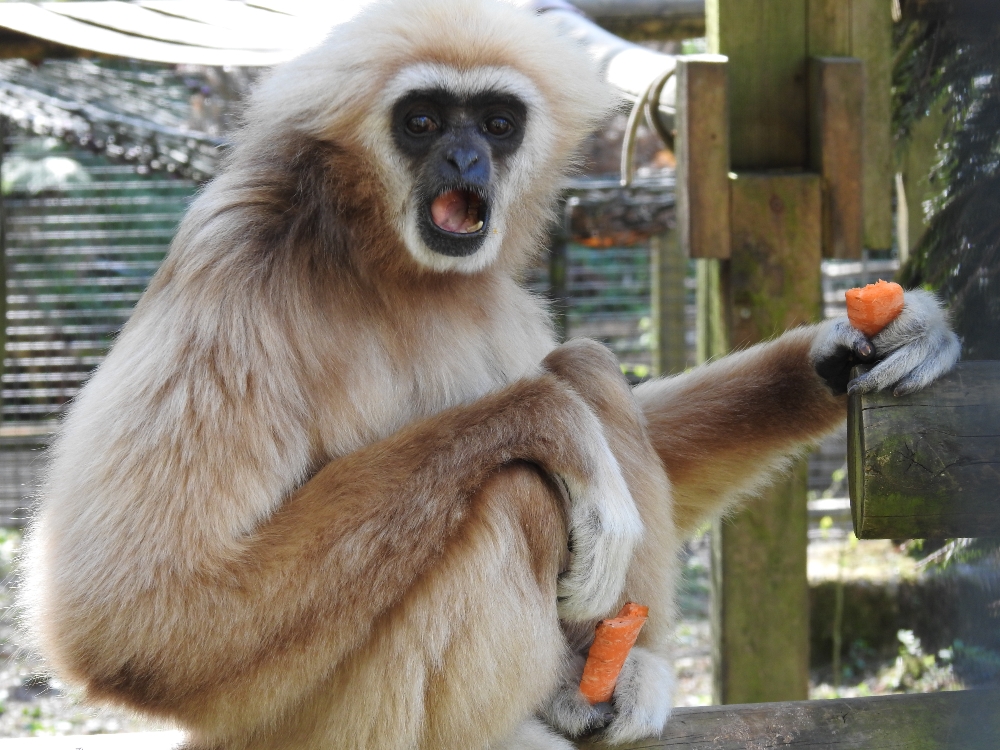

We have a family group of five Lar Gibbons. The group is made up of mum Parker, dad Dylan, oldest son Marwah, middle daughter Indah & youngster of the group female Lawang.
This cute family group can be found in our main primate house.

Lar Gibbons can be found in tropical and subtropical dry & moist forests, mainly in high canopy, throughout Southeast Asia, mainly in Thailand, Malaysia and the island of Sumatra in Indonesia.
In the wild, Lar Gibbons are mainly frugivorous, eating ripe fruit and are very selective about which types of fruit they eat. They will also eat flowers, leafy plants and insects.
Generally, a group consists of a mated pair with their offspring. The mating system is flexible; they are monogamous, but also show some serial monogamy by occasional changes of partners. Females will have one offspring every two to three years. The mother will provide the majority of care for the baby, but the father and older siblings help to raise the young also.
They use vocalisations to communicate with others of their species. Duets are sung by bonded pairs to announce territoriality, sending a signal to groups nearby who pose a threat. The duets take place between sunrise and noon. These duet last an average of 11 minutes and can be heard up to one kilometre away. Males will sing together to chase away intruders.
Lar Gibbons are masters of agility (despite having no tail), being remarkably fast when swinging through the trees from branch to branch, known as brachiating. Their long arms and hands are perfectly adapted to this means of locomotion. They sometimes walk along branches high up in the trees on their hind legs, characteristically lifting their arms up above their head to balance.
The main threat to the Lar Gibbon is the rapid loss of habitat, and it is putting their future in great danger. The forests in Southeast Asia are being logged and cleared for agriculture at a very rapid pace, therefore reducing the area where forest inhabitants can live. They are sometimes also hunted for their meat.
Lar Gibbons are affected by the illegal wildlife trade, with juvenile Gibbons being taken from the wild and sold as pets.
At the park we support the Endangered Primate Rescue Center (EPRC), who are working in Vietnam to rescue and rehabilitate primates, such as Gibbons. https://www.eprc.asia/
They range in colour from dark brown or black to pale fawn and red-buff, always having a white fringe around their black face and white hands and feet.
Lar Gibbons have flexible shoulders, very long arms and strong legs which assist their movements through the treetops.
Their four fingers form a ‘hook’ which gives them a solid grip on branches. They can cover distances of over 10 metres when brachiating and can bridge a gap of 50 feet at 35 miles per hour in a single swing. This ability makes them the fastest arboreal mammals that do not fly.





